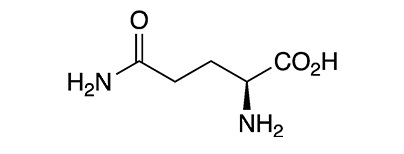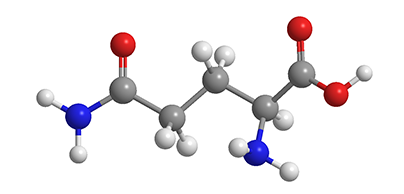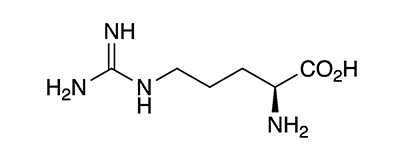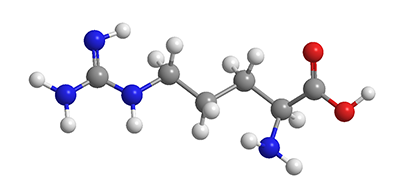What molecules are we?




L-Glutamine and L-arginine are classified as semi-essential or conditionally essential amino acids, which means that the human body can synthesize them under some health conditions but not others. Both are abundant in many foods.
Neither D-glutamine nor D-arginine is common in nature, so the L-amino acids are usually referred to without prefixes. In 1883, German chemists Ernst. Schulze and E. Bosshard isolated L-glutamine from the juice of sugarbeets. It is the most common amino acid in human blood and a key component of proteins.
In 1886, Schulze was also the first to isolate L-arginine, in this case from lupin seedlings. It is also an important amino acid in protein biosynthesis.
It turns out that a difference in occurrence between these two amino acids makes a huge difference in huge animals. This year, while examining the melanocortin system* of cetaceans, Roger D. Cone at the University of Michigan (Ann Arbor) and colleagues discovered that the two suborders of the sea mammals have different components at position 156 in the melanocortin-4 receptor. Glutamine is at this position in baleen whales, whereas toothed whales and dolphins contain arginine instead.
Cone’s group found that arginine in the receptor suppresses the beasts’ appetites relative to the glutamine-containing receptor. They believe that this difference contributes to the much larger sizes of baleen whales.
*The melanocortin system is an important regulator of metabolism, food intake, and fat storage.
L-Glutamine Fast Facts
| CAS Reg. No. | 56-85-9 |
| Molar mass | 146.14 g/mol |
| Formula | C5H10N2O3 |
| Appearance | White crystals or powder |
| Melting point | 185 ºC (dec.) |
| Water solubility | 25 g/L |
L-Arginine Fast Facts
| CAS Reg. No. | 74-79-3 |
| Molar mass | 174.20 g/mol |
| Formula | C6H14N4O2 |
| Appearance | White crystals or powder |
| Melting point | 244 ºC (dec.) |
| Water solubility | 15 g/L |

Learn more about this molecule from CAS, the most authoritative and comprehensive source for chemical information.
Molecule of the Week needs your suggestions!
If your favorite molecule is not in our archive, please send us a message. The molecule can be notable for its current or historical importance or for any quirky reason. Thank you!
Stay Ahead of the Chemistry Curve
Learn how ACS can help you stay ahead in the world of chemistry.

